Belter Health Measurement and Analysis Technology EIVSCB Fat scale User Manual IVSCB manual GB
Shenzhen Belter Health Measurement and Analysis Technology Co., Ltd. Fat scale IVSCB manual GB
IVSCB manual GB
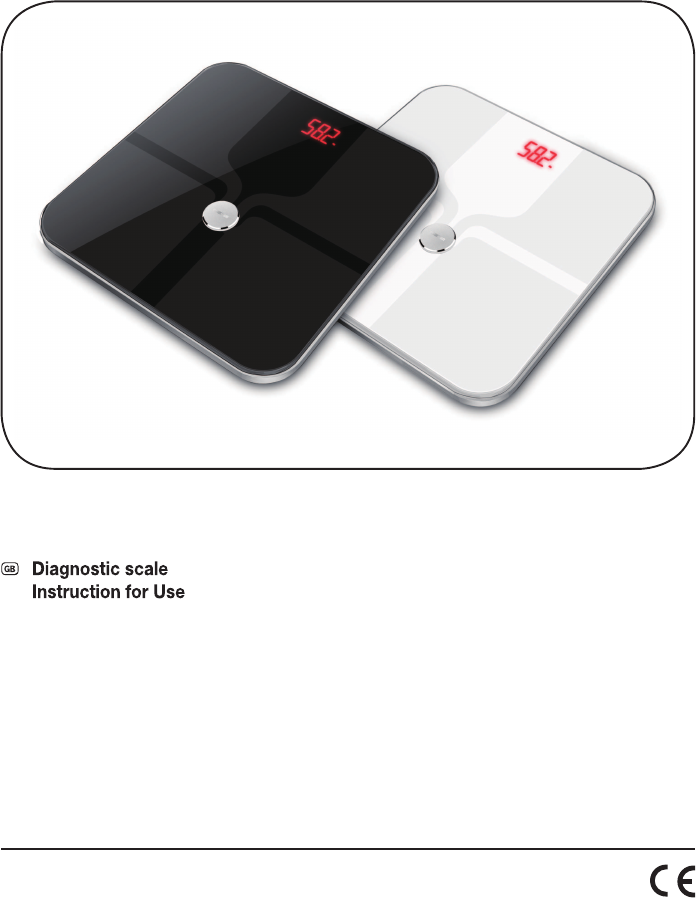
IVBPA
IVSCB
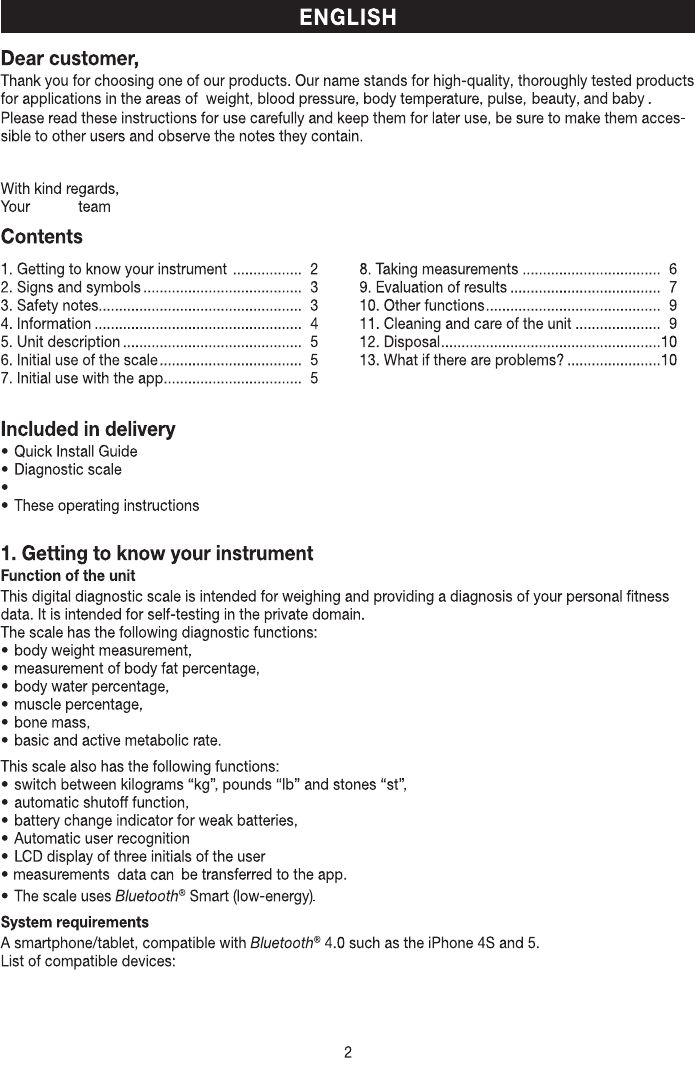
Belter
IVSCB
4×1.5V AAA batteries
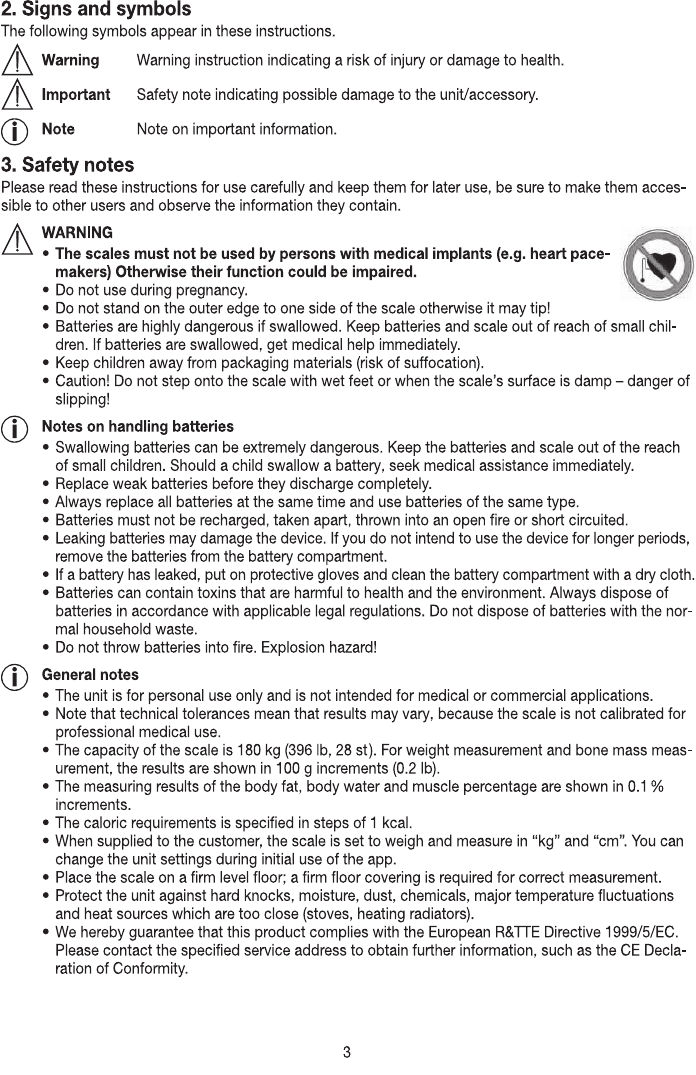
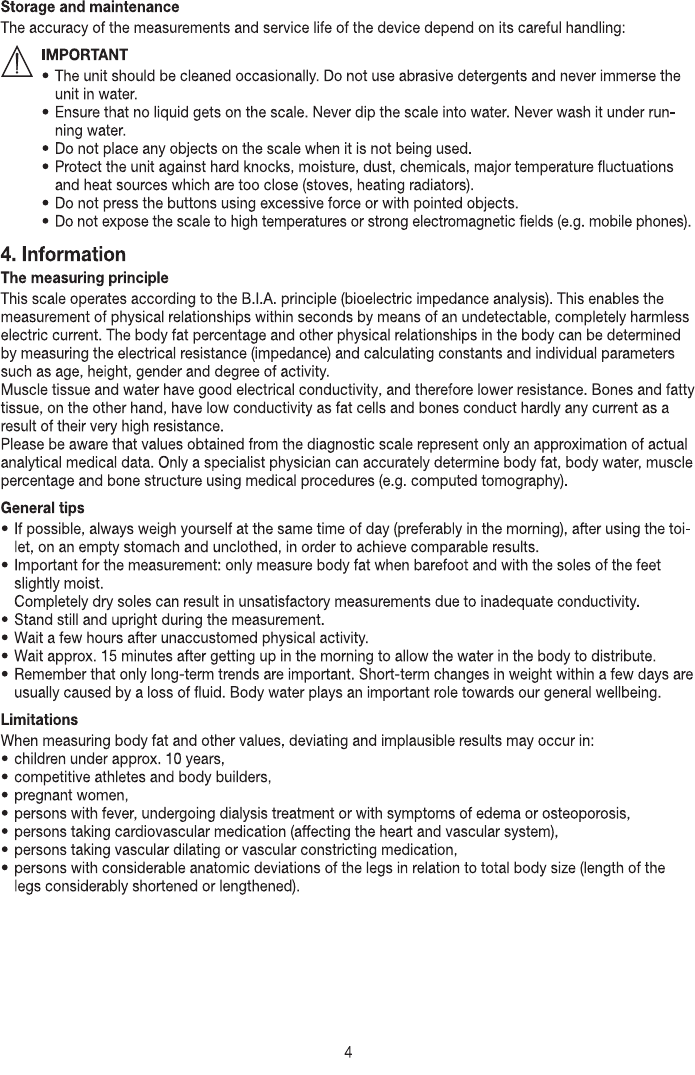
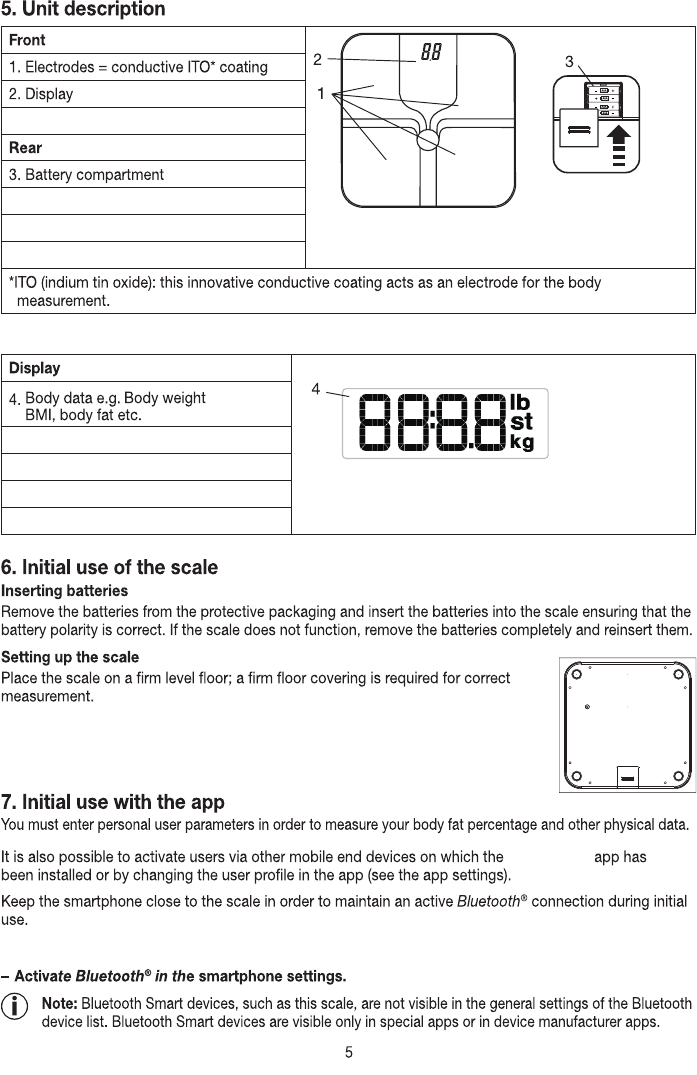
kg
Health Belter
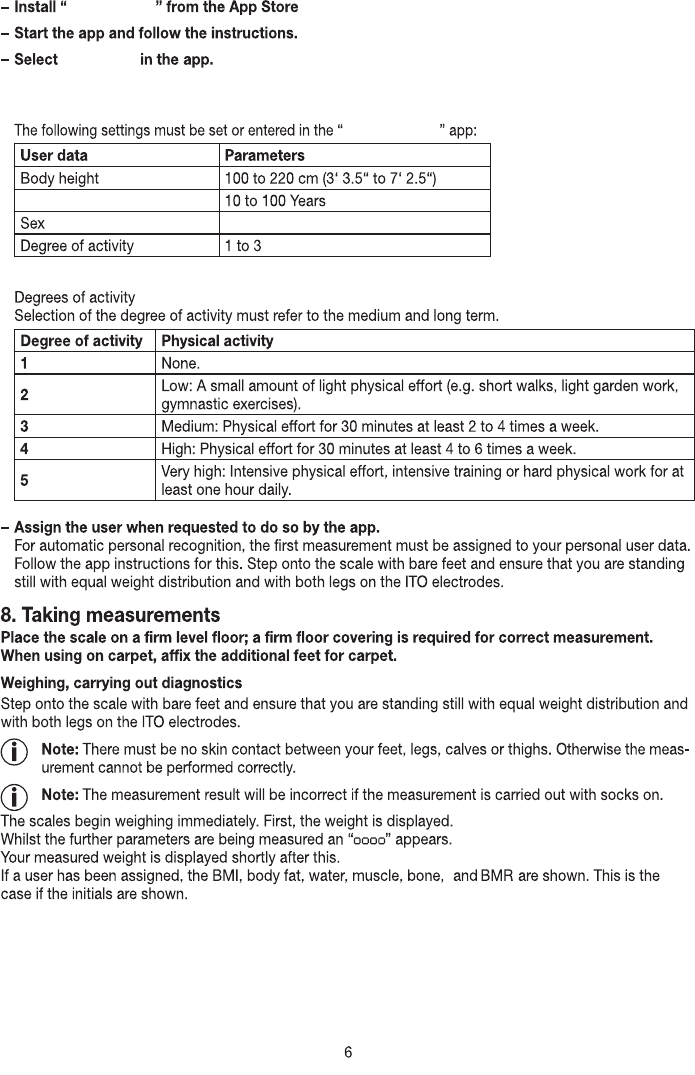
male,female
Birthday
Health Belter
Health Belter
IVSCB
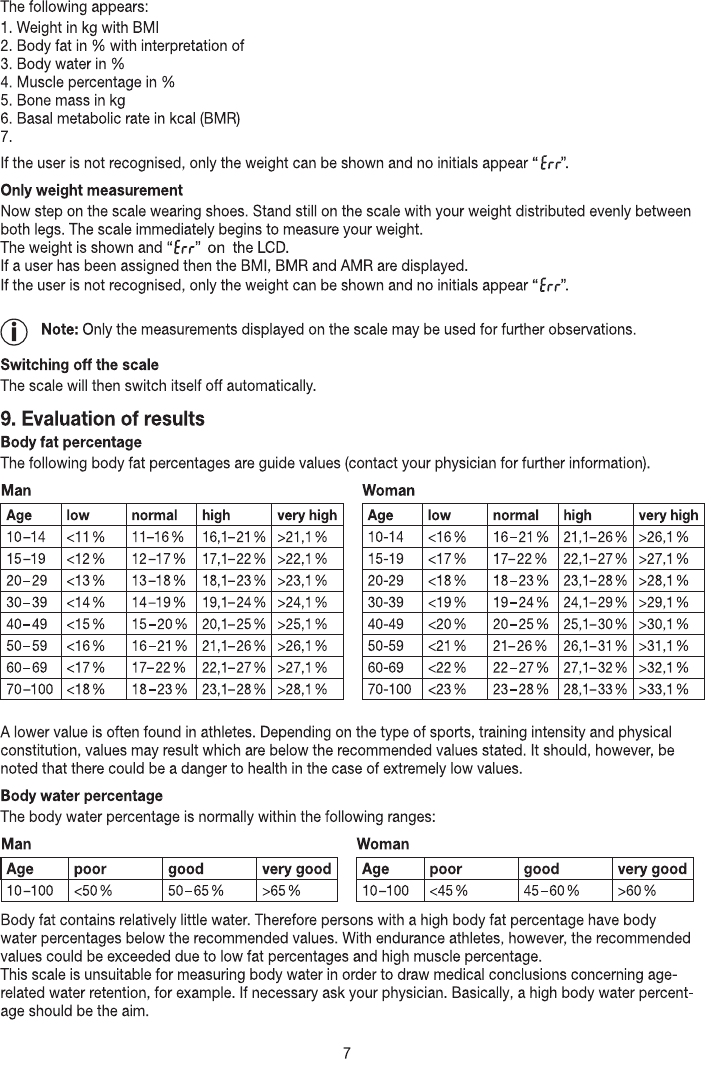
Fat
Water
Muscle
Visceral in number
Bone
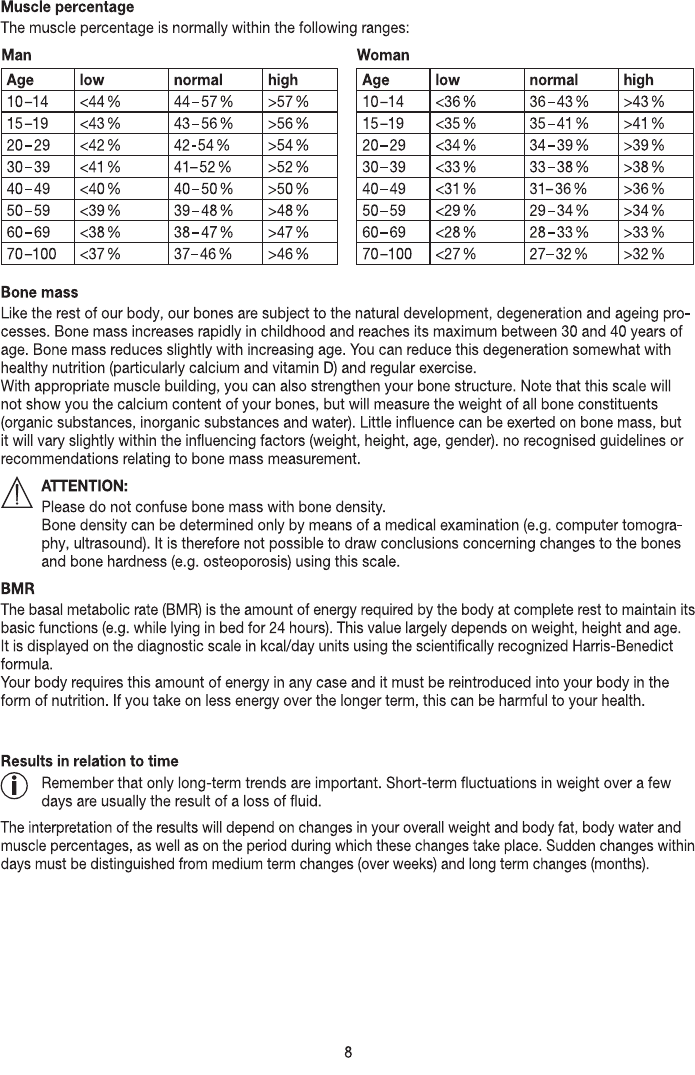
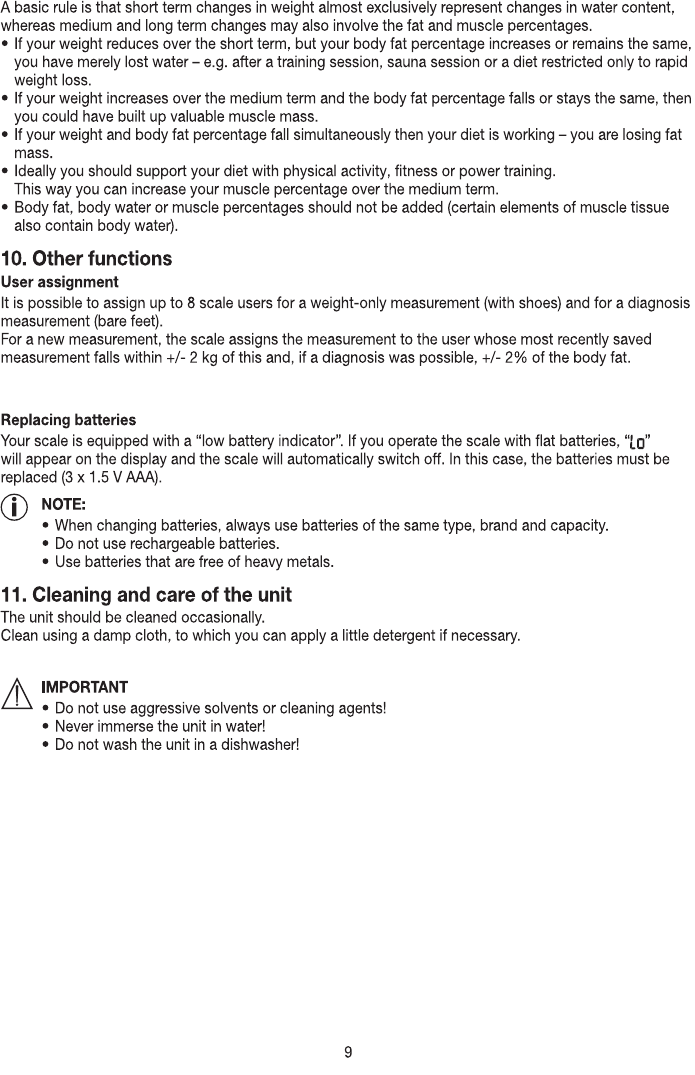
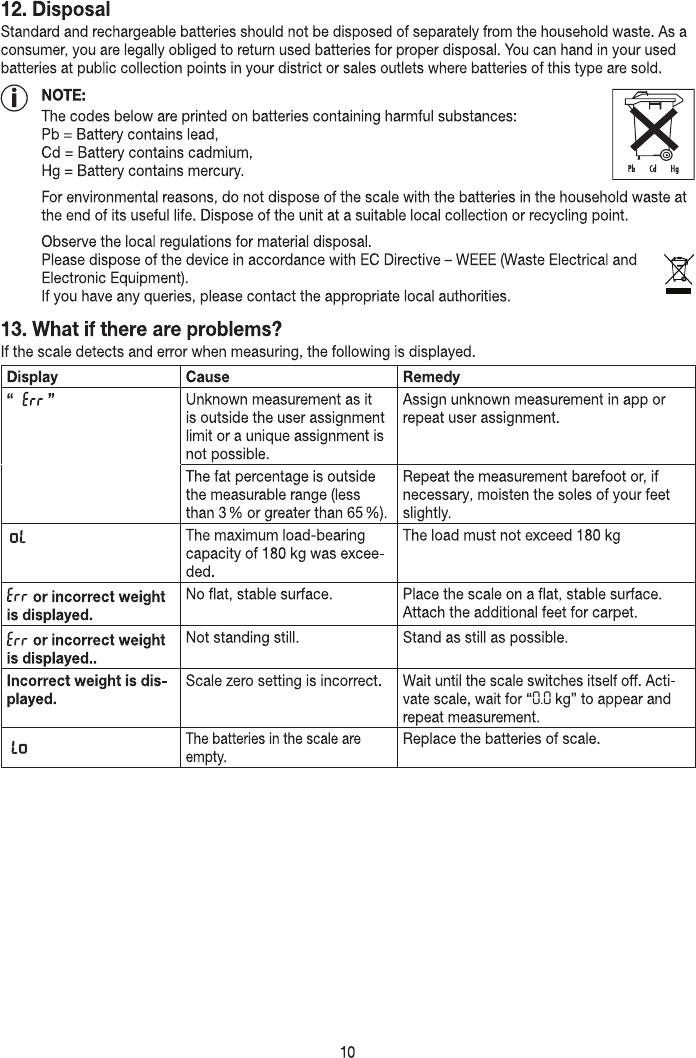

7KLVHTXLSPHQWKDVEHHQWHVWHGDQGIRXQGWRFRPSO\ZLWKWKHOLPLWVIRUD&ODVV%
GLJLWDOGHYLFHSXUVXDQWWRSDUWRIWKH)&&UXOHV7KHVHOLPLWVDUHGHVLJQHGWR
SURYLGH UHDVRQDEOH SURWHFWLRQ DJDLQVW KDUPIXO LQWHUIHUHQFH LQ D UHVLGHQWLDO
LQVWDOODWLRQ7KLVHTXLSPHQWJHQHUDWHVXVHVDQGFDQUDGLDWHUDGLRIUHTXHQF\HQHUJ\
DQGLIQRWLQVWDOOHGDQGXVHGLQDFFRUGDQFHZLWKWKHLQVWUXFWLRQVPD\FDXVHKDUPIXO
LQWHUIHUHQFH WR UDGLR FRPPXQLFDWLRQV +RZHYHU WKHUH LV QR JXDUDQWHH WKDW
LQWHUIHUHQFHZLOOQRWRFFXULQDSDUWLFXODULQVWDOODWLRQ
,IWKLVHTXLSPHQWGRHVFDXVHKDUPIXOLQWHUIHUHQFHWRUDGLRRUWHOHYLVLRQUHFHSWLRQ
ZKLFKFDQEHGHWHUPLQHGE\WXUQLQJWKHHTXLSPHQWRIIDQGRQWKHXVHULVHQFRXUDJHG
WRWU\WRFRUUHFWWKHLQWHUIHUHQFHE\RQHRUPRUHRIWKHIROORZLQJPHDVXUHV
噝5HRULHQWRUUHORFDWHWKHUHFHLYLQJDQWHQQD
噝,QFUHDVHWKHVHSDUDWLRQEHWZHHQWKHHTXLSPHQWDQGUHFHLYHU
噝&RQQHFWWKHHTXLSPHQWLQWRDQRXWOHWRQDFLUFXLWGLIIHUHQWIURPWKDWWRZKLFK
WKHUHFHLYHULVFRQQHFWHG
噝&RQVXOWWKHGHDOHURUDQH[SHULHQFHGUDGLR79WHFKQLFLDQIRUKHOS
7RDVVXUHFRQWLQXHGFRPSOLDQFHDQ\FKDQJHVRUPRGLILFDWLRQVQRWH[SUHVVO\DSSURYHG
E\WKHSDUW\UHVSRQVLEOHIRUFRPSOLDQFHFRXOGYRLGWKHXVHUÿVDXWKRULW\WRRSHUDWH
WKLVHTXLSPHQW
Radiation Exposure Statement
7KLV HTXLSPHQW FRPSOLHV ZLWK )&& UDGLDWLRQ H[SRVXUH OLPLWV VHW IRUWK IRU DQ
XQFRQWUROOHGHQYLURQPHQWDQGLWDOVRFRPSOLHVZLWK3DUWRI)&&5)5XOHV
CAUTION
7RFRPSO\ZLWKWKHOLPLWVRIWKH&ODVV%GLJLWDOGHYLFHSXUVXDQWWR3DUWRIWKH
)&&5XOHVWKLVGHYLFHLVFRPSO\ZLWK&ODVV%OLPLWV$OOSHULSKHUDOVPXVWEHVKLHOGHG
DQGJURXQGHG2SHUDWLRQZLWKQRQFHUWLILHGSHULSKHUDOVRUQRQVKLHOGHGFDEOHVPD\
UHVXOWVLQLQWHUIHUHQFHWRUDGLRRUUHFHSWLRQ
MODIFICATION
$Q\FKDQJHVRUPRGLILFDWLRQVQRWH[SUHVVO\DSSURYHGE\WKHJUDQWHHRIWKLVGHYLFH
FRXOGYRLGWKHXVHUÿVDXWKRULW\WRRSHUDWHWKHGHYLFH

Annex of Report
Manufacturer’s Declaration of the EUT
(altogether 5 pages)
Guidance and manufacturer’s declaration – electromagnetic emission –
for all EQUIPMENT AND SYSTEMS
1 Guidance and manufacturer’s declaration – electromagnetic emission
2 The SF-371 body fat scale is intended for use in the electromagnetic environment specified below. The
customer or the user of SF-371 body fat scale should assure that it is used in such an environment.
3 Emissions test Compliance Electromagnetic environment - guidance
4
RF emissions
CISPR 11
Group 1
The SF-371 body fat scale uses RF energy only for its internal
function. Therefore, its RF emissions are very low and are not
likely to cause any interference in nearby electronic equipment.
5
RF emissions
CISPR 11
Class B
6
Harmonic emissions
IEC 61000-3-2
N/A
7
Voltage fluctuations /
flicker emissions
IEC 61000-3-3
N/A
The SF-371 body fat scale is suitable for use in all
establishments, including domestic establishments and those
directly connected to the public low-voltage power supply netw
ork
that supplies buildings used for domestic purposes.
Guidance and manufacturer's declaration – electromagnetic immunity –
for all EQUIPMENT and SYSTEMS

Guidance and manufacturer’s declaration – electromagnetic immunity
The SF-371 body fat scale is intended for use in the electromagnetic environment specified below. The customer
or the user of the SF-371 body fat scale should assure that it is used in such an environment.
Immunity test IEC 60601
test level Compliance level Electromagnetic environment -
guidance
Electrostatic
discharge (ESD)
IEC 61000-4-2
± 6 kV contact
± 8 kV air
± 6 kV contact
± 8 kV air
Floors should be wood, concrete or
ceramic tile. If floors are covered with
synthetic material, the relative
humidity
should be at least 30 %.
Electrostatic
transient / burst
IEC 61000-4-4
± 2 kV for power
supply lines
± 1 kV for input/output
lines
1$
Mains power quality should be that of
a
typical commercial or hospital
environment.
Surge
IEC 61000-4-5
± 1 kV differential
mode
± 2 kV common mode
1$
Mains power quality should be that of
a
typical commercial or hospital
environment.
Voltage dips,
short
interruptions and
voltage variations
on power supply
input lines
IEC 61000-4-11
< 5 % UT
(>95 % dip in UT )
for 0.5 cycle
40 % UT
(60 % dip in UT )
for 5 cycles
70 % UT
(30 % dip in UT )
for 25 cycles
< 5 % UT
(>95 % dip in UT )
for 5 sec
1$
Mains power quality should be that of
a
typical commercial or hospital
environment. If the user of the
SF-371 body fat scale requires
continued operation during power
mains interruptions, it is
recommended that the SF-371 body
fat scale be powered from an
uninterruptible power supply or a
battery.
Power frequency
(50/60 Hz)
magnetic field
3 A/m
3 A/m
Power frequency magnetic fields
should be at levels characteristic of a
typical location in a typical
commercial or hospital environment.

IEC 61000-4-8
NOTE UT is the a. c. mains voltage prior to application of the test level.

Guidance and manufacturer’s declaration – electromagnetic immunity –
for EQUIPMENT and SYSTEM that are not LIFE-SUPPORTING
Guidance and manufacturer’s declaration – electromagnetic immunity
The SF-371 body fat scale is intended for use in the electromagnetic environment specified below. The customer or
the user of the SF-371 body fat scale should assure that it is used in such an environment.
Immunity test IEC 60601 test
level
Compliance level Electromagnetic environment - guidance
Conducted RF
IEC 61000-4-6
Radiated RF
IEC 61000-4-3
3 Vrms
150 kHz to 80 MHz
3 V/m
80 MHz to 2.5 GHz
1$
3 V/m
Portable and mobile RF communications equipment
should be used no closer to any part of the SF-371 body
fat scale , including cables, than the recommended
separation distance calculated from the equation
applicable to the frequency of the transmitter.
Recommended separation distance
P
V
d]
5.3
[
1
P
E
d]
5.3
[
1
80 MHz to 800 MHz
P
E
d]
7
[
1
800 MHz to 2.5 GHz
where p is the maximum output power rating of the
transmitter in watts (W) according to the transmitter
manufacturer and d is the recommended separation
distance in metres (m).b
Field strengths from fixed RF transmitters, as determined
by an electromagnetic site survey,a should be less than the
compliance level in each frequency range.b
Interference may occur in the vicinity of equipment
marked with the following symbol:
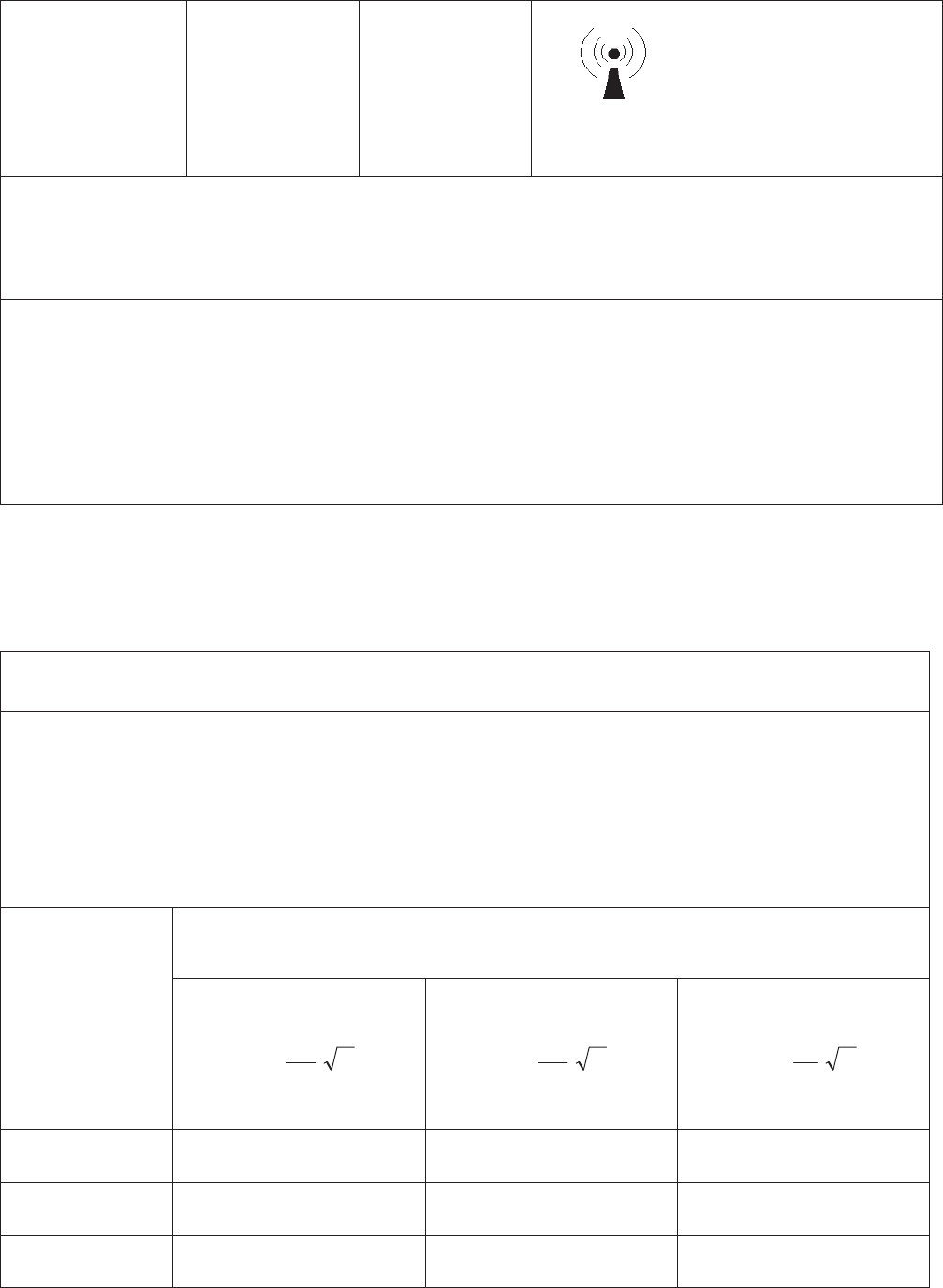
NOTE 1 At 80 MHz and 800 MHz, the higher frequency range applies.
NOTE 2 These guidelines may not apply in all situations. Electromagnetic is affected by absorption and reflection from structures,
objects and people.
a Field strengths from fixed transmitters, such as base stations for radio (cellular/cordless) telephones and land mobile radios,
amateur radio, AM and FM radio broadcast and TV broadcast cannot be predicted theoretically with accuracy. To assess the
electromagnetic environment due to fixed RF transmitters, an electromagnetic site survey should be considered. If the measured field
strength in the location in which the SF-371 body fat scale is used exceeds the applicable RF compliance level above, the
SF-371 body fat scale should be observed to verify normal operation. If abnormal performance is observed, additional measures
may be necessary, such as reorienting or relocating the SF-371 body fat scale .
b Over the frequency range 150 kHz to 80 MHz, field strengths should be less than 3V/m.
Recommended separation distances between portable and mobile
RF communications equipment and the EQUIPMENT or SYSTEM -
for EQUIPMENT and SYSTEMS that are not LIFE-SUPPORTING
Recommended separation distances between
portable and mobile RF communications equipment and the SF-371 body fat scale
The SF-371 body fat scale is intended for use in an electromagnetic environment in which radiated RF disturbances are
controlled. The customer or the user of the SF-371 body fat scale can help prevent electromagnetic interference by
maintaining a minimum distance between portable and mobile RF communications equipment (transmitters) and the SF-371 body
fat scale as recommended below, according to the maximum output power of the communications equipment
Separation distance according to frequency of transmitter
m
Rated maximum
output of
transmitter
W
150 kHz to 80 MHz
P
V
d]
5.3
[
1
80 MHz to 800 MHz
P
E
d]
5.3
[
1
800 MHz to 2.5 GHz
P
E
d]
7
[
1
0.01 / 0.12 0.23
0.1 / 0.38 0.73
1 / 1.2 2.3

10 / 3.8 7.3
100 / 12 23
For transmitters rated at a maximum output power not listed above the recommended separation distance d in metres
(m) can be estimated using the equation applicable to the frequency of the transmitter, where P is the maximum output
power rating of the transmitter in watts (W) according to the transmitter manufacturer.
NOTE 1 At 80 MHz and 800 MHz, the separation distance for the higher frequency range applies.
NOTE 2 These guidelines may not apply in all situations. Electromagnetic propagation is affected by absorption and
reflection from structures, objects and people.